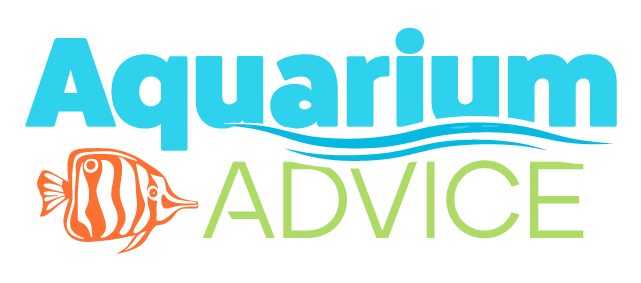INTRODUCTION
I started keeping aquariums when I was around 12 years old, roughly 18 years ago. I started with a 10 gallon freshwater tropical tank in my bedroom. This was because it was the only animal my parents would let me have and now that I’m a parent I completely understand. Needless to say it has stuck with me like the bubble gum out of a blow pop. I believe what stuck with me the most was the sound of the water from a hang-on back filter and the relaxation it gave me while lying in bed (it still does to this day). Anyways, I kept this tank for roughly 8 years while living with my parents, then moved onto saltwater for 7 years while living in an apartment. My wife then bought my 180 gallon aquarium for my birthday one year but it sat in storage for a couple years while we were waiting on our house to be built. We finally finished the house and my 180 gallon tank has a prominent spot in our living room wall.
SETUP
 So that brings me to my in-wall 180 gallon Lake Malawi biotope, that consists of 45 fish (listed below) and filtration and DIY builds. For filtration I run an overflow box to a Pro Clear trickle filter with bio balls and poly floss. I drilled a hole in the side and ran pvc into a 29 gallon DIY refugium that’s berried in different plants (listed below).
So that brings me to my in-wall 180 gallon Lake Malawi biotope, that consists of 45 fish (listed below) and filtration and DIY builds. For filtration I run an overflow box to a Pro Clear trickle filter with bio balls and poly floss. I drilled a hole in the side and ran pvc into a 29 gallon DIY refugium that’s berried in different plants (listed below).
It then gets pumped back to the tank with a sump pump that pushes over 1200 gallons per hour. In the tank I also have two power heads, two heaters and a hang on back filter that runs only poly floss. I run two Nova Extreme 2xT5HO Lights with SunPaq Compact bulbs that are two 10,000k daylight, one 460nm Actinic ( blue) and one 420nm Actinic (purple).
 There are also three reflector cones running repti glo 10.0 uvb bulbs. I wrote an article that can be found here if you would like to learn or just read up on things on Lake Malawi mbuna.
There are also three reflector cones running repti glo 10.0 uvb bulbs. I wrote an article that can be found here if you would like to learn or just read up on things on Lake Malawi mbuna.
The decorations in the tank are of my DIY 3D backgrounds with real rocks stacked in front to fill up a little emptiness and to add a few more caves for the Cichlids. The 3D Background on the left side of my pictures was made to look like a cave with a basking spot on top for the turtle. The Background on the other side was made to look like a mountain under water. For my substrate I went with the Quickrete play sand in the main tank. In the refugium I used 1.5” of kitty litter topped about 1” of sand. As a quick note Lake Malawi mostly consists of large rocks and sand and a very few plants if any.
INHABITANTS
Plants
- Anubius
- Amazon Sword
- Anacharis
- Java ferns
- A few others that I just threw in that I’m not sure of the names
Fish
- 2 Afra Yellow Mara
- Dragon Blood
- Lethrinops Intermedius
- Taiwan Reef
- Red Cap Lethrinops
- Afra Cobue
- 8 Yellow Fin Mbamba
- Greberi
- Rusty
- Tangerine Tiger
- 2 Bumble Bees
- 2 Red Zebra
- Makonde Yellow Black Fin
- 2 Red empress
- Aurora
- Ice Blue Zebra
- 8 yellow labs
- 2 Sunshine Peacocks
- Jakobfreibergi
- Strawberry albino Peacock
- Ob Zebra
- Elongatus
- 3 Pictus catfish
- Eel
- Stinkpot musk turtle
- Bristle nose Pleco
FEEDING
During feeding time I feed the cichlids different things like Hikari excel pellets, bloodworms, New Life Spectrum, carrots, cucumber and homemade food that I make from time to time. My turtle normally comes to the top where I can hand him food such as tetra min aquatic turtle sticks, shrimp, algae wafers and sometimes worms that the kids find outside. The catfish and Pleco I don’t try to spot feed they just eat whatever they find on the bottom.
MAINTENANCE
The best thing I’ve ever done with my tank is run a water line with a water spigot above my tank; it makes water changes easy and nice. This is how I do it, keeping in mind I have well water; I start a syphon with my cleaning tool and turn the water on almost full blast. I clean the top of the sand by going in a circle motion. Then I just rest the siphon on a rock so it won’t float up and I go and clean all the glass. I leave it running for 15-20 minutes so I’m not sure how much water actually gets replaced. I then test my salt levels with a hydrometer and add API aquarium salt and Epson salt to the hob filter. I use an api saltwater master test kit and my water test 1.008-1.010 specific gravity, 0 ammonia, 0 nitrites, and nitrates fluctuates a lot because it’s a heavy bio load.
CLOSING THOUGHTS
The tank adds a lot of color to our home and we enjoy it very much. I am glad I made the choice to do a Malawi tank. It is also a great conversation piece being in the family room and learning experience for the kids, that I hope someday I can pass down to them.




